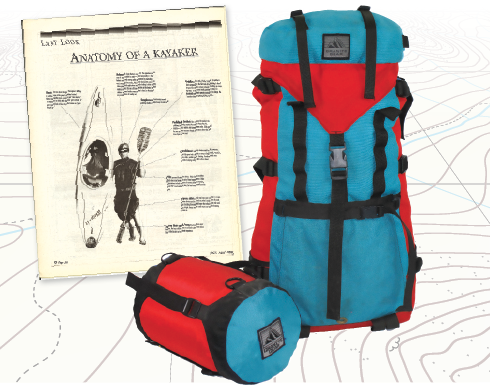It feels like it was just yesterday that I was packing up my little Jansport backpack with my Army surplus gear, harnessing my dog to my sled for adventures through my neighborhood backyards and creeks.
How time truly flies when you’re having fun. I got my start in the outdoors going on family camping trips, fishing with my dad, and eventually joining the Boy Scouts. Later, I went on ski trips and canoe trips in high school, along with summer camps and an Outward Bound course. I soon became immersed in the outdoor scene and began writing about it as far back as 1990.
Many of us back in those days did stints as raft guides, probably lived out of a Toyota truck or Volkswagon van for at least one summer (or three in my case), ski bummed a bit, maybe managed to tick off a Bachelor’s degree in something outdoorsy. And of that group, in my humble opinion, the lucky ones among us found and kept jobs in the outdoor industry.
A lot has changed in 20 years. Gear has always been evolving: from fur to wool, from lug soles to Vibram soles, from metal and leather to plastic, from cotton to nylon, from steel to carbon. Folks in their 20s today probably never had to use the floorless canvas pup tents that I did, and they probably have never owned an external frame pack, but rock climbing shoes have really barely changed since the 90s. So what’s different now?
Maybe the simple answer is that technology has changed our gear. Smart phone apps have largely replaced USGS folding maps; tiny digital devices have replaced heavy SLRs; UV light sticks have replaced iodine tablets; recycled synthetic fibers have replaced down; and waterproof breathables just keep getting better.
Yet many of our favorite innovations are simply incremental. Sleeping bags are still human-shaped and use bird feathers for insulation; climbing rubber is just a little stickier; wool has made a massive comeback; and tents are still polyester sheets supported by aluminum frames.
Perhaps the real test of a good piece of gear is how long it lasts. Of course, some gear just gets loved to death, and that’s what you’re supposed to do with it. It does no good sitting in the closet. Maybe you’ve got a Patagonia jacket you’ve been using for a decade, sending it back in for repair when a zipper breaks. Or some threadbare fleece longjohns you’re going to toss out…next season. Or your first pair of Vasque boots resoled three times. Fishing lures, repaired tents, carabiners, gators, Gore-tex jackets…some of these things last a long time.
Steven Regenold is another double-decade gear abuser like myself, and the founder of The Gear Junkie, which began in 2002 as a newspaper column in the Minneapolis Star Tribune. Today, it’s syndicated in newspapers around the U.S. What are some of Renegold’s favorite gear game changers?
“Merino wool base layers have been a revolutionary performance product for me,” he says. “I wear them almost every day, through all weather and activities. It truly is like a second skin and adapts to hot, cold, wet, dry. And minimal running shoes changed the way I ran, made me faster, made me stronger, and cut back on the knee trouble I was having when I ran in more-padded shoes.”
A few of the Gear Junkie’s other top picks over the last 20 years: Fat bikes; Buff headwear (“Use them 100 days a year”); iPhones and Strava (and myriad other apps); and the massive strides in alpine touring gear that is currently driving the ski industry at large.
A few of my own personal favorite innovations of the last 20 years include the foldable, lighter, BPA-free water bottles now available (and the insulated stainless steel bottles too); LED lights for headlamps and bikes; waterproof down insulation for sleeping bags and jackets; awesome new water purifiers that allow you stay hydrated more easily; improved waterproof-breathable membranes for shells; and the more packable, warmer sleeping pads using combinations of air and high-tech insulation that take up way less space in a pack or a boat.
But there’s no single gear trend or technology more important than your own skill and experience. And ultimately, gear must work well with each individual’s particular needs. It comes down to this. The best gear innovation in the last 20 years? It’s the one that gets you outside more.








